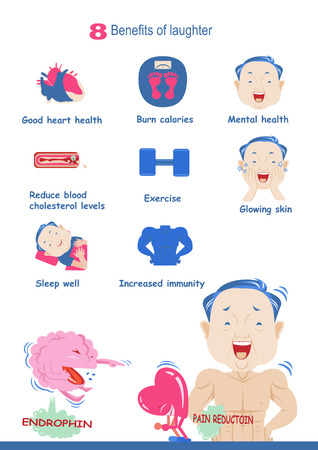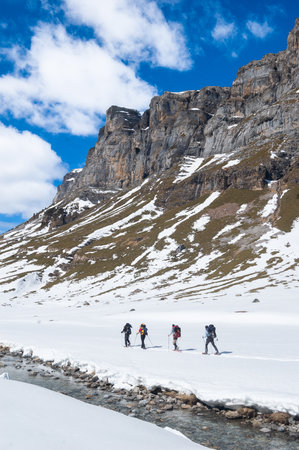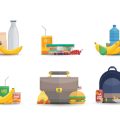1. Recognizing Emergency Situations on the Trail
When hiking in the wilderness, knowing how to spot an emergency can make all the difference. Quick action is crucial if someone needs CPR or rescue breathing. Here’s what you need to look out for and some common causes that may require immediate help.
Common Signs of a Medical Emergency
| Warning Sign | What It Might Mean |
|---|---|
| Unresponsiveness (doesnt wake up or respond) | Cardiac arrest, severe injury, or shock |
| No breathing or abnormal breathing (gasping, snoring noises) | Possible cardiac arrest, choking, or near drowning |
| Blue lips or face | Lack of oxygen; possible airway blockage or cardiac issue |
| Sudden collapse while hiking | Heart problems, heat stroke, exhaustion |
| Choking sounds or clutching at throat | Airway obstruction from food, water, or other objects |
| Coughing after falling into water | Near drowning, risk of respiratory distress |
Situations Where CPR or Rescue Breathing May Be Needed
- Cardiac Arrest: If someone suddenly collapses and isn’t breathing normally, their heart may have stopped. This is a life-threatening emergency where CPR is needed right away.
- Choking: If a hiker can’t speak, breathe, or cough after eating or drinking, their airway might be blocked. Rescue breaths may help if they become unresponsive.
- Near Drowning: Falling into rivers or lakes happens on hikes. If a person is pulled from water and isn’t breathing, rescue breathing could save their life.
Tips for Hikers in American Wilderness Areas
- Always hike with a buddy—someone who can get help or start CPR if needed.
- Keep a basic first aid kit and know how to use it.
- If cell service is available, call 911 as soon as you spot an emergency.
- If in doubt about someone’s condition, err on the side of caution and act quickly.
2. Calling for Help and Activating Emergency Response
Communicating Your Location Clearly
If a fellow hiker needs CPR or rescue breathing, knowing exactly where you are is crucial. When calling 911 or emergency services, give them detailed information so they can find you fast. Here’s how to make your location clear:
| What to Share | Tips |
|---|---|
| Trail Name & Nearest Marker | Mention the trail, mile marker, or any nearby signs. |
| GPS Coordinates | Use your phone or GPS device to get latitude and longitude if possible. |
| Landmarks | Describe rivers, peaks, bridges, or trail junctions close by. |
| Distance from Trailhead | Estimate how far you are from the start or any major access point. |
Using Emergency Beacons and Phones
In remote areas where cell service is unreliable, an emergency beacon or satellite communicator can save lives. Here’s a quick guide:
| Device Type | How It Works | Best Use Case |
|---|---|---|
| SOS Beacons (PLBs) | Sends your GPS location and distress signal to rescuers via satellite. | No cell coverage; life-threatening emergencies. |
| Satellite Messengers (e.g., Garmin inReach, SPOT) | Allows text messaging and SOS calls via satellite. | Remote hikes; communicating updates to family and SAR teams. |
| Cell Phones (with offline maps) | Call 911 if there’s signal; use GPS for coordinates. | Areas with occasional reception; everyday hiking. |
Troubleshooting: No Signal?
- Move to higher ground for better reception.
- Avoid deep valleys or thick forests if possible while staying safe.
- If you have a beacon, activate it immediately for fastest response.
Working with Search and Rescue Teams (SAR)
If local authorities or Search and Rescue teams respond, here’s how you can help:
- Stay Put: Unless moving is necessary for safety, remain at your current location so rescuers can find you quickly.
- Signal Rescuers: Use bright clothing, a whistle (three blasts), or reflective gear to attract attention.
- Follow Instructions: Listen closely to SAR directions—by phone, radio, or when they arrive on scene.
- Share Information: Tell rescuers about the victim’s condition, what first aid you’ve provided, and any allergies or medical info if known.

3. Performing Hands-Only CPR in the Wilderness
Step-by-Step Directions for Hikers
If you find yourself on the trail and someone is unresponsive and not breathing normally, acting fast can save their life. Even without special equipment, you can provide effective hands-only CPR. Here’s how to do it safely and confidently:
Step 1: Check for Responsiveness and Breathing
- Tap the person’s shoulder and shout, “Are you okay?”
- If there’s no response and they are not breathing or only gasping, call for help immediately.
- If you have cell service, dial 911. If not, send someone to get help while you begin CPR.
Step 2: Position the Person
- Roll the person onto their back on a firm, flat surface. Clear away rocks or gear if needed.
- Kneel beside their chest.
Step 3: Find Hand Placement
- Place the heel of one hand on the center of their chest (right between the nipples).
- Put your other hand on top and interlock your fingers.
- Keep your arms straight and shoulders above your hands.
Step 4: Give Chest Compressions
| Action | Details |
|---|---|
| Pace | Push hard and fast at a rate of 100-120 compressions per minute (think of the beat of “Stayin’ Alive” by the Bee Gees). |
| Depth | Compress at least 2 inches deep for adults. |
| Let Chest Recoil | Allow the chest to rise fully between compressions—don’t lean on it. |
| Minimize Interruptions | Keep going until help arrives or the person shows clear signs of life. |
Improvising in Rugged Environments
- If the ground is uneven, quickly move rocks or branches from under the person’s back to create as flat a surface as possible.
- If you need padding for your knees, use a backpack, jacket, or rolled-up clothing.
- If you’re alone, shout loudly for help while continuing compressions—other hikers may hear you.
- If you become too tired, switch off with another trained hiker if available. Try to minimize pauses during the switch.
Pro Tips for Maintaining Technique Without Equipment:
- Avoid using improvised items (like water bottles) on top of your hands—they can slip and reduce compression quality.
- If weather is cold, keep your gloves on for insulation but make sure you can feel chest movement under your hands.
- If dust or dirt gets in your way, wipe it off quickly so nothing interferes with hand placement.
- If you lose count of compressions, just keep pushing hard and fast—quality is more important than perfect counting in emergencies.
Remember: Hands-only CPR is simple but powerful. Your actions can double or triple someone’s chance of survival while waiting for rescue teams to arrive. Don’t hesitate—jump in and start compressions if someone needs help out on the trail!
4. Rescue Breathing: When and How to Use It
When Is Rescue Breathing Needed?
Rescue breathing, sometimes called mouth-to-mouth resuscitation, is crucial when a hiker is not breathing but still has a pulse. This situation can occur after drowning, choking, a near-lightning strike, or other medical emergencies in the wild. Recognizing when someone needs rescue breathing can make a life-or-death difference.
| Signs That Rescue Breathing Is Needed | What To Do |
|---|---|
| No breathing, but pulse is present | Begin rescue breathing immediately |
| Blue lips or face (cyanosis) | Start rescue breaths while checking for airway blockage |
| Unconscious after water rescue or choking incident | Check pulse, then give rescue breaths if needed |
How to Perform Mouth-to-Mouth Resuscitation Outdoors
- Make sure the scene is safe: Check your surroundings before helping.
- Position the victim: Lay the person flat on their back on firm ground.
- Open the airway: Tilt their head back and lift their chin to open the airway.
- Check for breathing: Look, listen, and feel for breaths for up to 10 seconds.
- If not breathing but has a pulse:
- Pinch their nose shut.
- Create a seal over their mouth with yours.
- Give 1 breath every 5-6 seconds (about 10-12 per minute) for adults.
- Watch for chest rise with each breath.
- If chest does not rise, reposition the head and try again.
- Continue until they start breathing on their own or help arrives.
Precautions for Safety and Hygiene in the Field
- If you have a barrier device (CPR mask): Use it to reduce disease risk. Many hiking first aid kits include a pocket mask or face shield.
- Avoid direct contact if possible: If no mask is available and you are uncomfortable giving mouth-to-mouth, you can provide hands-only CPR until professional help arrives.
- If fluids are present: Clear vomit or debris from the mouth before giving breaths, using gloves if available.
- Always wash your hands as soon as possible after providing care: Use hand sanitizer if soap and water are not available on the trail.
The Takeaway: Stay Prepared and Calm
If you find yourself needing to give rescue breaths during a hike, staying calm and following these simple steps can save a life. Practice with your hiking group so everyone feels confident in an emergency.
5. Aftercare and Handover to First Responders
Monitoring the Victim After CPR or Rescue Breathing
Once you have performed CPR or rescue breathing on a fellow hiker, it’s important to keep a close eye on their condition until help arrives. Here are some simple steps to follow:
- Check for Breathing: Look, listen, and feel for normal breathing every few minutes.
- Monitor Pulse: If you know how, check their pulse regularly.
- Watch for Changes: Stay alert for any changes in skin color, consciousness, or breathing patterns.
- Keep Them Comfortable: If safe, protect the victim from extreme cold, heat, or rain using jackets or emergency blankets.
Recording Essential Information
When professional help is on its way—like EMTs or park rangers—it’s crucial to pass along key details about what happened. Use the table below as a handy checklist of information to record:
| What to Record | Why It’s Important |
|---|---|
| Time incident occurred | Helps responders understand the timeline |
| What happened (injury/illness) | Gives context for treatment |
| Actions taken (CPR, rescue breaths, etc.) | Avoids repeating or missing steps in care |
| Changes in condition (consciousness, breathing) | Keeps medical team up-to-date on progress |
| Medications/allergies (if known) | Affects treatment decisions |
| Your contact info as responder | If further questions arise later |
Assisting First Responders When They Arrive
- Stay Calm and Brief: Quickly share your recorded information with EMTs or park rangers when they arrive.
- Answer Questions: Be ready to answer any follow-up questions about what happened and what you observed.
- Step Back When Asked: Once professionals take over, let them do their job but stay nearby in case they need more information.
- Help Guide Rescuers: If you’re in a remote area, help guide responders to the scene if needed.
Your Role Matters!
Your quick action and clear communication can make a big difference during emergencies on the trail. Remember these steps to support first responders and give your fellow hiker the best chance at recovery.


